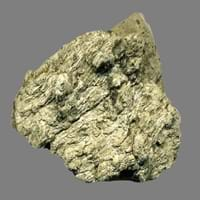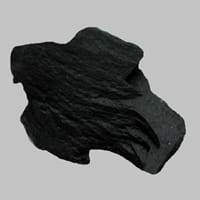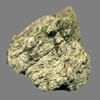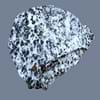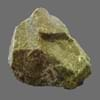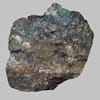Definition
Dacite is a volcanic igneous rock which is rintermediate in composition between andesite and rhyolite
Lignite is a soft brownish coal which shows traces of plants and is intermediate between bituminous coal and peat
Origin
Romania and Moldova, Europe
France
Discoverer
Unknown
Unknown
Etymology
From Dacia, a province of the Roman Empire which lay between the Danube River and Carpathian Mountains where the rock was first described
From French, Latin lignum wood + -ite1
Class
Igneous Rocks
Sedimentary Rocks
Sub-Class
Durable Rock, Soft Rock
Durable Rock, Soft Rock
Group
Volcanic
Not Applicable
Other Categories
Fine Grained Rock, Medium Grained Rock, Opaque Rock
Coarse Grained Rock, Fine Grained Rock, Medium Grained Rock, Opaque Rock
Texture
Aphanitic to Porphyritic
Amorphous, Glassy
Color
Bluish - Grey, Brown, Grey, Light to Dark Grey
Black, Brown, Dark Brown, Grey, Light to Dark Grey
Durability
Durable
Durable
Appearance
Vesicular
Veined or Pebbled
Interior Uses
Decorative Aggregates, Entryways, Interior Decoration
Not Yet Used
Exterior Uses
As Building Stone, Paving Stone, Garden Decoration
Not Yet Used
Other Architectural Uses
Curbing
Not Yet Used
Construction Industry
As Dimension Stone, Construction Aggregate, for Road Aggregate, Landscaping
for Road Aggregate, Steel Production
Medical Industry
Not Yet Used
Not Yet Used
Antiquity Uses
Artifacts
Not Yet Used
Commercial Uses
Commemorative Tablets, Creating Artwork
Electricity Generation
Types
Footwall Dacite, Hanging wall Dacite, Tuff and Biotite Dacite
Xyloid Lignite or Fossil Wood and Compact Lignite or Perfect Lignite
Features
Host Rock for Lead, Is one of the oldest rock
Generally rough to touch, Helps in production of Heat and Electricity, Used as fossil fuel
Archaeological Significance
Monuments
Not Yet Used
Not Yet Used
Famous Monuments
Not Applicable
Not Applicable
Sculpture
Not Yet Used
Not Yet Used
Famous Sculptures
Not Applicable
Not Applicable
Figurines
Not Yet Used
Not Yet Used
Formation
Dacitic magma is formed by the subduction of young oceanic crust under a thick felsic continental plate. Further, the Oceanic crust is hydrothermally altered as quartz and sodium are added.
Coal formation takes place due to accumulation of plant debris in a swamp environment. The Coal formation process continues, as peat turns into lignite brown or black coal at increasing heat and pressure.
Mineral Content
Amphibole, Apatite, Biotite, Feldspar, Garnet, Hornblade, Magnetite, Plagioclase, Pyroxene, Quartz, Zircon
Not Available
Compound Content
Ca, Fe, Potassium Oxide, Mg, Potassium, Silicon Dioxide
Carbon, Hydrogen, Nitrogen, Oxygen, Sulphur
Types of Metamorphism
Burial Metamorphism, Cataclastic Metamorphism
Not Applicable
Types of Weathering
Biological Weathering, Chemical Weathering, Mechanical Weathering
Biological Weathering, Chemical Weathering, Mechanical Weathering
Types of Erosion
Chemical Erosion
Chemical Erosion, Water Erosion, Wind Erosion
Grain Size
Medium to Fine Coarse Grained
Medium to Fine Coarse Grained
Fracture
Conchoidal
Conchoidal
Porosity
Less Porous
Highly Porous
Luster
Subvitreous to Dull
Dull to Vitreous to Submetallic
Cleavage
Perfect
Non-Existent
Toughness
Not Available
Not Available
Specific Gravity
2.86-2.87
1.1-1.4
Transparency
Translucent
Opaque
Density
2.77-2.771 g/cm3
800-801 g/cm3
Resistance
Heat Resistant, Impact Resistant, Pressure Resistant, Wear Resistant
Heat Resistant
Deposits in Eastern Continents
Asia
Not Yet Found
Bangladesh, Burma, Cambodia, China, India, Indonesia, Kazakhstan, Malaysia, Mongolia, Pakistan, Turkey, Vietnam
Africa
Not Yet Found
Botswana, Kenya, Morocco, Mozambique, South Africa, Tanzania
Europe
France, Greece, Romania, Scotland, Spain
Belgium, Bulgaria, England, France, Germany, Greece, Hungary, Kosovo, Netherlands, Norway, Poland, Romania, Serbia, Slovakia, Slovenia, The Czech Republic, Ukraine, United Kingdom
Others
Not Yet Found
Not Yet Found
Deposits in Western Continents
North America
USA
Canada, Mexico, USA
South America
Argentina, Bolivia, Chile, Colombia, Ecuador, Peru, Venezuela
Brazil, Chile, Colombia, Venezuela
Deposits in Oceania Continent
Australia
New Zealand, South Australia, Western Australia
New South Wales, Queensland, Victoria
